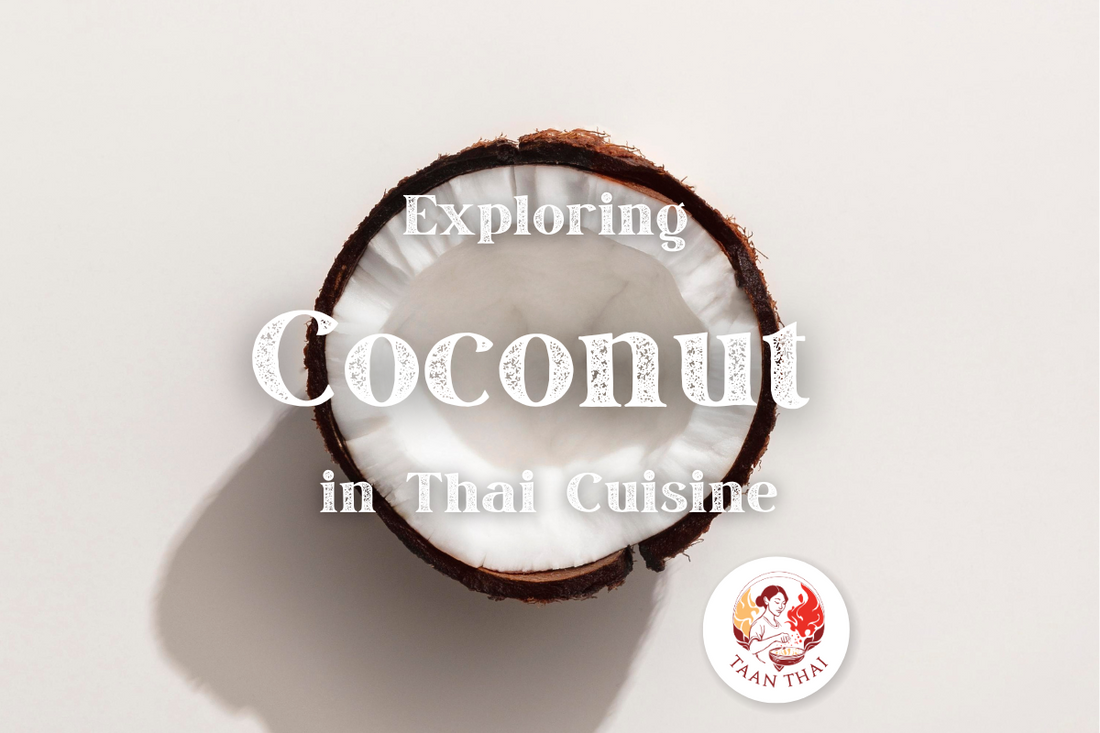
Exploring Coconut in Thai Cuisine
Share
Thai cooking makes full use of coconut, from its refreshingly sweet water to its sturdy shell. Each part infuses dishes with unique flavors and textures. Here’s a quick breakdown of how different coconut components work together to give Thai food its signature richness.
1. Coconut Water
Coconut water is the clear, mildly sweet liquid found inside young green coconuts. Thais enjoy drinking fresh coconut juice right from the shell. It is also a part many recipes in smoothie’s stores. Coconut juice jelly (Woon Maprao) also uses the clear coconut juice to make a jelly – it is a part of many Thai desserts.

2. Coconut Flesh (Meat)
Coconut flesh, forming the white interior of the coconut, ranging from tender (in young coconuts) to firm (in mature coconuts) is used for many desserts in its freshly shredded form. For example, fresh coconut flesh is a part of many Thai dessert with ice and syrup. Coconut flesh is also toasted to make a coconut flakes and sprinkled on top of many desserts and snacks (such as Miang Kham and Kanom Tom (Coconut Dumplings).

3. Coconut Milk and Cream
Coconut milk and cream are extracted from grated coconut flesh mixed with water. Coconut cream is thicker (first pressing – called Hua Kati in Thai), and milk is thinner (subsequent pressings – called Hang Kati in Thai). Both coconut milk and cream are the must-have ingredients for all Thai coconut curries such as green curry, red curry, panang curry, and massaman. Coconut milk is essential for lighter soup such as Tom Kha. Coconut cream is also used heavily in many Thai desserts, including the famous mango sticky rice and banana in sweentened coconut milk (Kluai Buat Chi). In Thai desserts, coconut milk is typically sweetened and lightly salted to balance out the flavors.

4. Coconut Shell and Husk
Coconut shell and husk are parts of the hard outer shell and fibrous husk surrounding the coconut. Thais use coconut husks as fuel in grilling fish and meats to provide a smoky aroma. Coconut husks are also used to mix and fertilize soils for potted plants in Thailand. Coconut shells are also modified to be all kinds of utensils such as spoon, fork, and small spatula. Many Thais also believe that it is a good luck if one finds a “one-eyed” coconut shell (typically coconut shells contain 2 holes) -- think a Thai version of the 4-leaf clover!

TAAN THAI: Convenient Coconut Goodness
Coconut’s creamy sweetness elevates Thai cooking. Our TAAN THAI Tom Kha and Khao Soi Coconut Noodles include real coconut milk in powder form in the starter kits—making it simpler for you to create authentic Thai flavors in your own kitchen. Whether you’re simmering a rich coconut soup or whipping up hearty Northern curry noodles, TAAN THAI has you covered with the essential aromas and textures of the coconut.
Bring a Taste of Thailand Home with TAAN THAI’s ready-to-cook sauces and pastes. Explore your favorite Thai recipes with ease and experience the delightful versatility of coconut in every dish!
